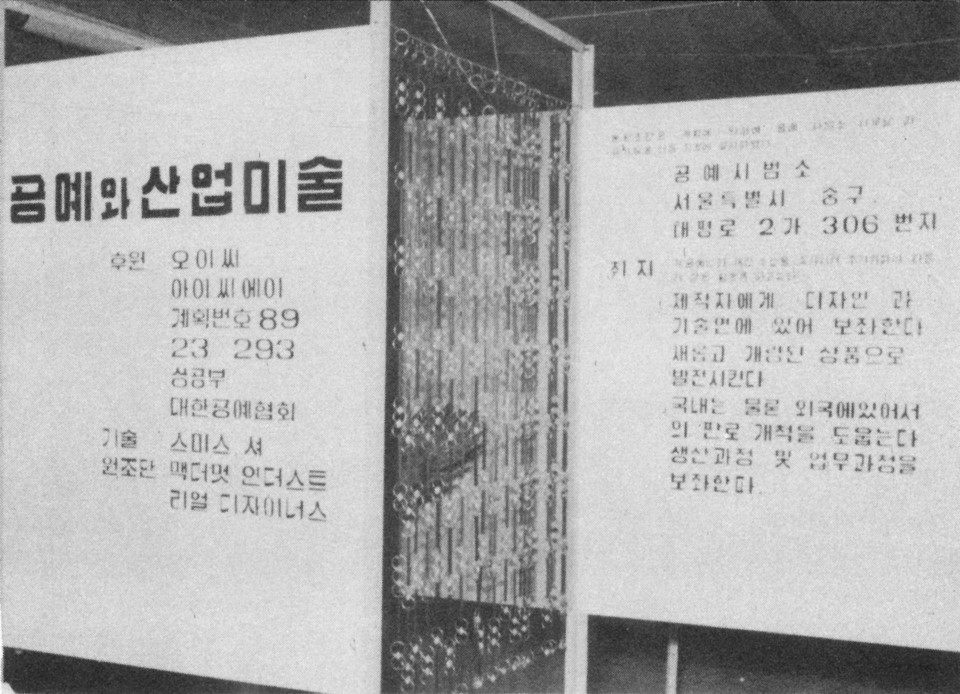
Korean Handicraft Demonstration Center Exhibition View, c.1959, Image provided by Kim Jongkyun
Korean Project
* Source: MMCA
Related
-
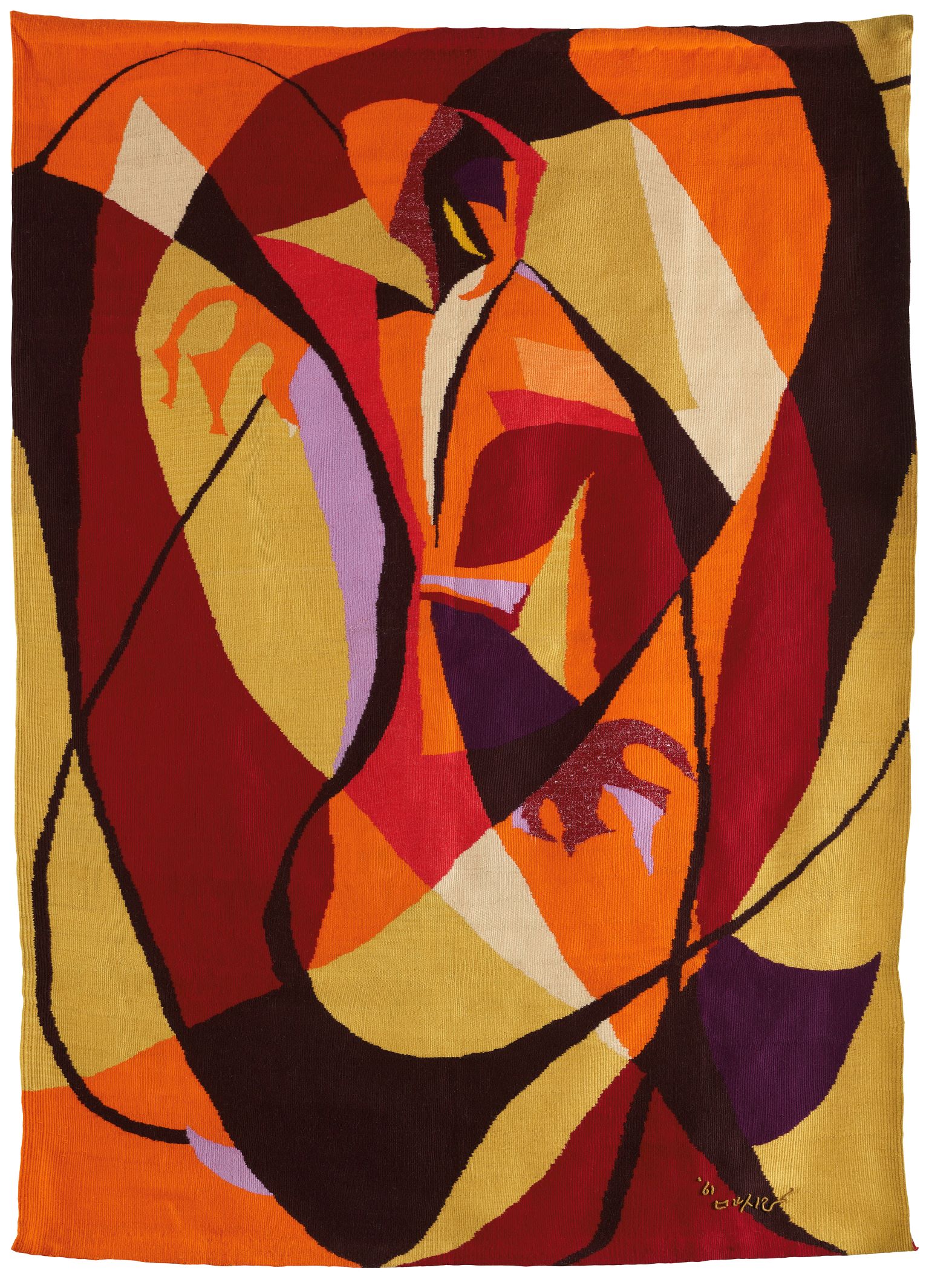
Pai Mansil
Pai Mansil (1923-2018, pen name Chunbin) was a Korean textile artist. She graduated from the English Department at Ewha College (present-day Ewha Womans University) in 1943. After Korea’s liberation from Japan, she majored in textile design at The University of the Arts in Philadelphia, U.S., and completed the master’s course in industrial art at Columbia University. In 1974, she received a doctorate in literature from Ewha Womans University. After returning from studying abroad in the U.S., Pai served as a professor in the Living Art and Decorative Art Departments at Ewha Womans University for nearly thirty years. After retirement, she ran Chunbin Total Design Academy from 1991 through 1997. Pai believed that art enriches and beautifies life and that design, in particular, is central to art since it is devised through creativity and imagination, along with skills in applying all materials. Accordingly, she engaged in all fields of applied art, decorative art, living art, and industrial art, and her activity spanned from interior decoration to interior architecture. She submitted her work to the Modern Korean Crafts Grand Exhibition in Commemoration of the 30th Anniversary of Liberation (1975), the Korean Fiber Art Biennale (1984), Art to Wear (1987), the Textile Art Festival (1990), and the Seoul Craft Exhibition (1991). Her notable work as an interior designer includes the Walkerhill Hotel (1962) and the YMCA Center (1968). She won the Seoul City Culture Award and was awarded the Pomegranate Medal of the Order of Civil Merit. In 2010, she was bestowed the title of Master Designer from the Korean Society for Interior Architects and Designers. Among her publications and related catalogues are Design and Color (1965), History of Decorative Art (1975), The Art of Korean Furniture: Late Yi Dynasty (1975), The Beauty of Wooden Furniture from the Yi Dynasty (1978), Traditional Style of Korean Wooden Furniture (1988), Dining Tables Korean Traditional Handicrafts (2006), Mal Sill Pai’s Art and Design Works (2012). The archives of Pai Mansil were donated to the MMCA in October 2020.
-
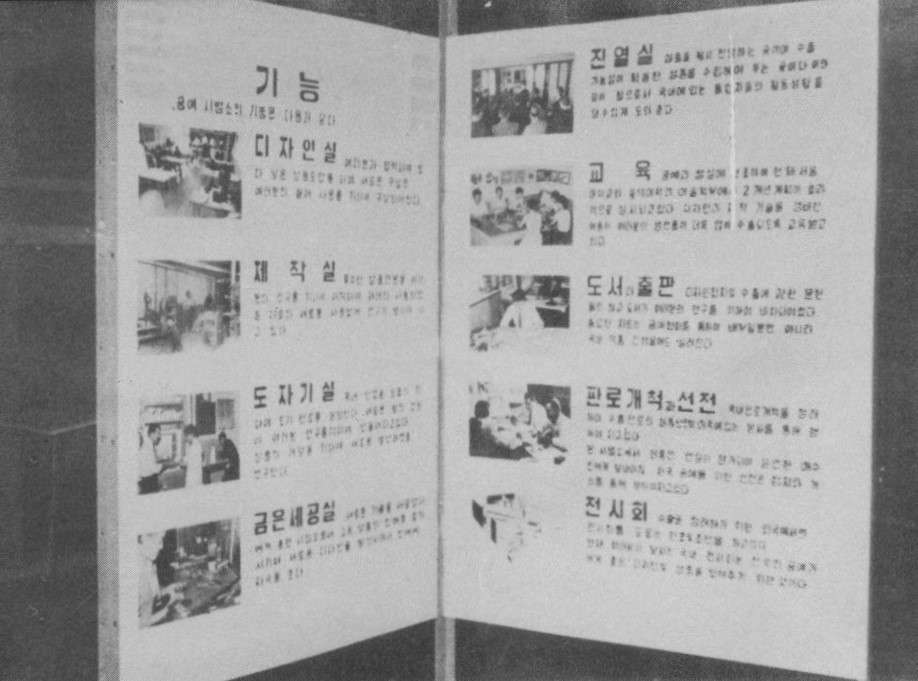
Korean Handicraft Demonstration Center
An organization for the development of the craft industry that formed in 1956, with the support of the International Co-operation Administration (ICA) of the United States. The ICA was one of the programs launched in 1955 to support developing countries, and it aimed to improve and foster the craft industry of Korea. Smith, Scherr & McDermott Industrial Design, an American firm in Akron, Ohio, led the establishment of the center on the fourth floor of the Central Industry building in Taepyeong-ro. The primary activities of the center included the survey of handicrafts and light industry in Gyeongnam, Jeonbuk, and Jeonnam; the improvement of design in crafts such as woodworking, ceramics, and metalworking; the establishment of crafts departments in universities and industrial design courses; and on-site training. The center was transferred to the Seoul National University College of Fine Arts in 1960, and it closed in May 31, 1960, when the contract with the Korean government expired. The center was instrumental in implementing American design education and the concepts of industrial design in Korea.
-
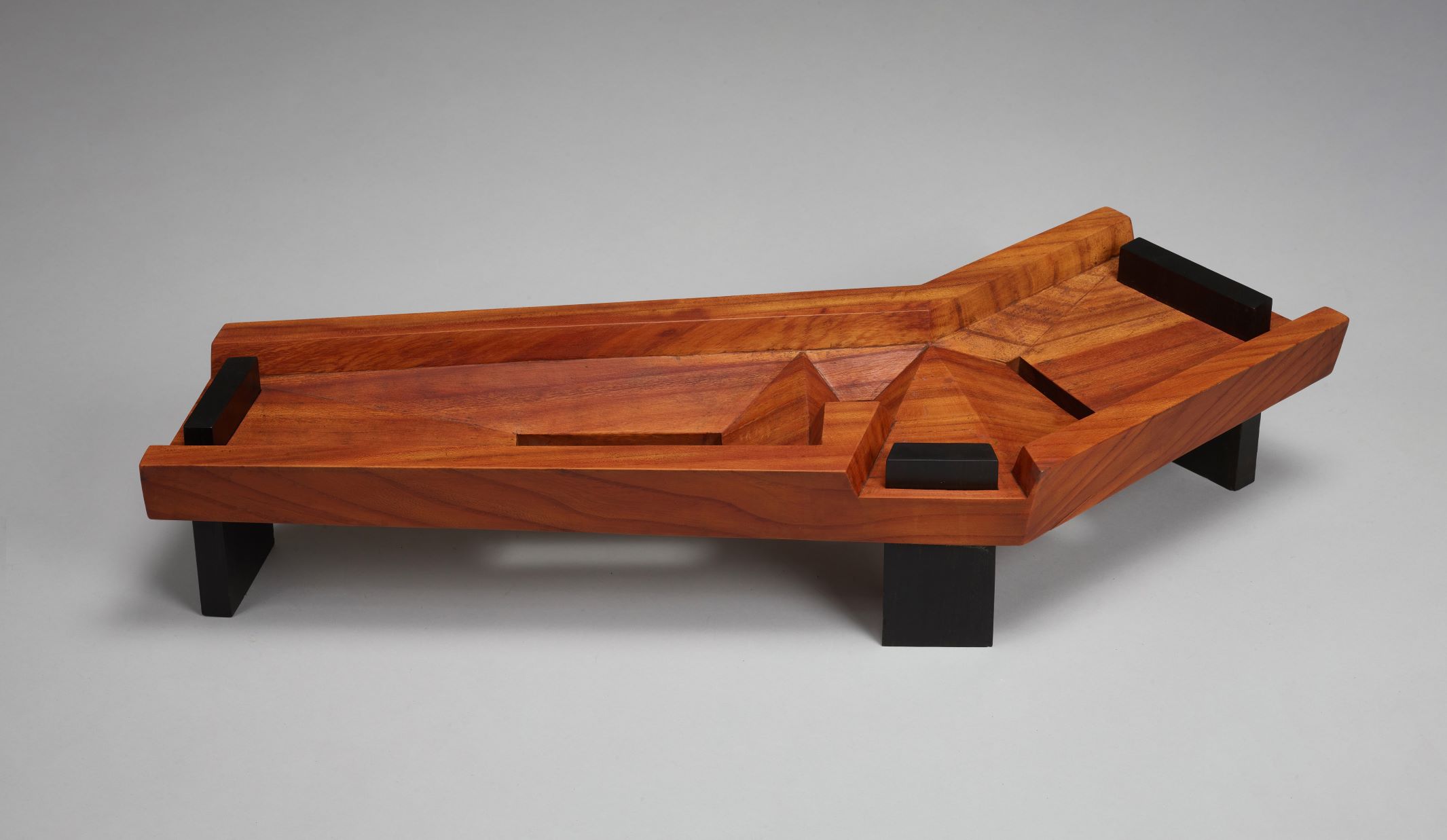
Min Chulhong
Min Chulhong(1933-2020) is a pioneering industrial designer and educator who has engaged in both education and artistic practice based on contemporary design concepts. Soon after graduating from the Applied Arts Department at the College of Fine Arts of Seoul National University in 1958, Min was selected for the Design Faculty Overseas Study Program organized by the Korea Handcraft Demonstration Center (KHDC) and studied for a year at the Illinois Institute of Technology in the U.S. as a special student. After his return to Korea in 1959, he served as head designer at the KHDC and taught in the Applied Arts Department at the College of Fine Arts of Seoul National University. In 1963, he was appointed as a full-time lecturer at the same university, and there he worked as a professor until his retirement in 1998. In June 1972, he founded the Korea Society of Industrial Designers (KSID, later absorbed and integrated into the Korea Association of Industrial Designers (KAID)) together with eight other designers. They are Lee Sunhyeok, Bu Su-eon, Kim Gilhong, An Jong-mun, Bae Cheon-beom, Choi Daeseok, Kim Cheol-su, and Min Gyeong-u. The oldest of the nine founding members, Min Chulhong led the establishment of the KSID and served as its first and second president. In 1983, he founded Min Industrial Design Associates, which provided design services for government agencies and business entities. The institute undertook a wide range of service projects, including industrial machines and robots, transportation devices, environmental sculptures, and corporate identity programs (CIP). Occasionally, Kim Jinpyeong, Kwon Yeonggeol, Kim Gyeongbae, Kim Hyeonjung, Mun Gijong, Jang Hoik, Jeong Gyeongwon, Ko Ildu, Hong Seokgi, and others participated in these projects as part-time designers. In the same year, Min became a design advisor to Daewoo Electronics. In 1986, he was appointed as a design committee member for the Seoul Olympic Games and designed a sculpture engraved with the names of Olympic winners and a documentary monument Wall of Glory (1989). In 1994, the Min Chol Hong Retrospective exhibition was held at the MMCA. It was the first solo exhibition of an industrial designer since the museum opened. Min received the Silver Tower Order at the Korea Design Award in 2005, and in 2013 he was inducted into the Designer Hall of Fame by the Korea Institute of Design Promotion.
Find More
-
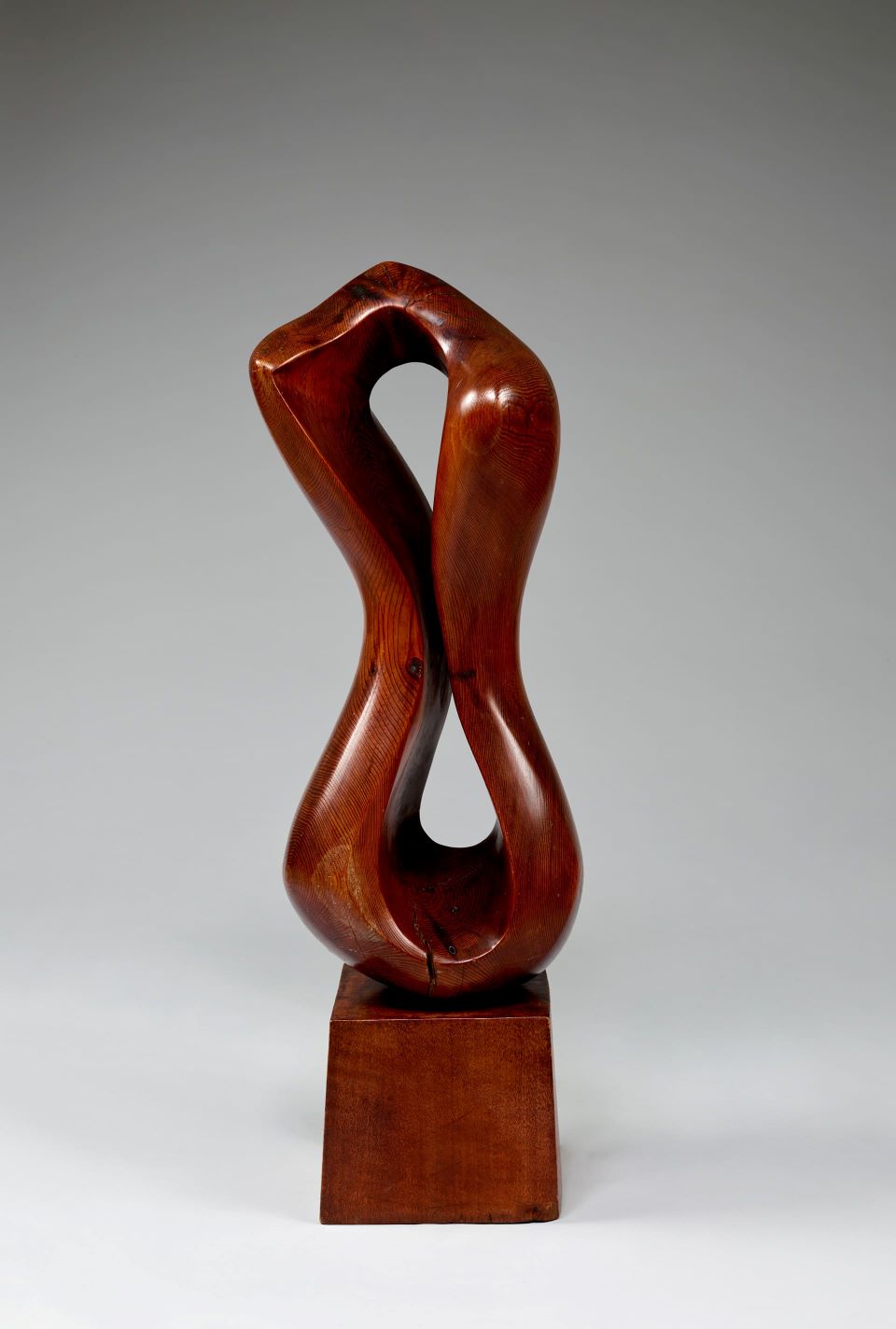
Kim Chungsook
Kim Chungsook (1917-1991) was taught by Yun Hyojoong and Yoo Jinmyeong at Hongik University until graduating in 1953. She moved to the U.S. and studied painting from professor Leo Spot at Mississippi State University and attended the graduate program of the Cranbrook Academy of Art, Michigan. After her return to Korea in 1957 she worked as a professor at Hongik University. She introduced welded sculpture to Korean students and artists and expanded the scope of sculptural metal work in Korea. She went back to the U.S. to study industrial design and metal craft at the Cleveland Institute of Art in Ohio from 1958 to 1959. She served as the Dean of sculpture in the Fine Art department of Hongik University and the director of the Plastic Arts Research Institute. Kim Chungsook’s style has been described as one of love and affection, as her work reflected both her strong Christian beliefs and her feminine sensibility. Her series Wings is considered as representational of her interests in diverse techniques and materials. In the context of modernist sculpture in Korea she is considered a pioneer who worked in the tradition of Plasticism to introduce a new lyrical approach.
-
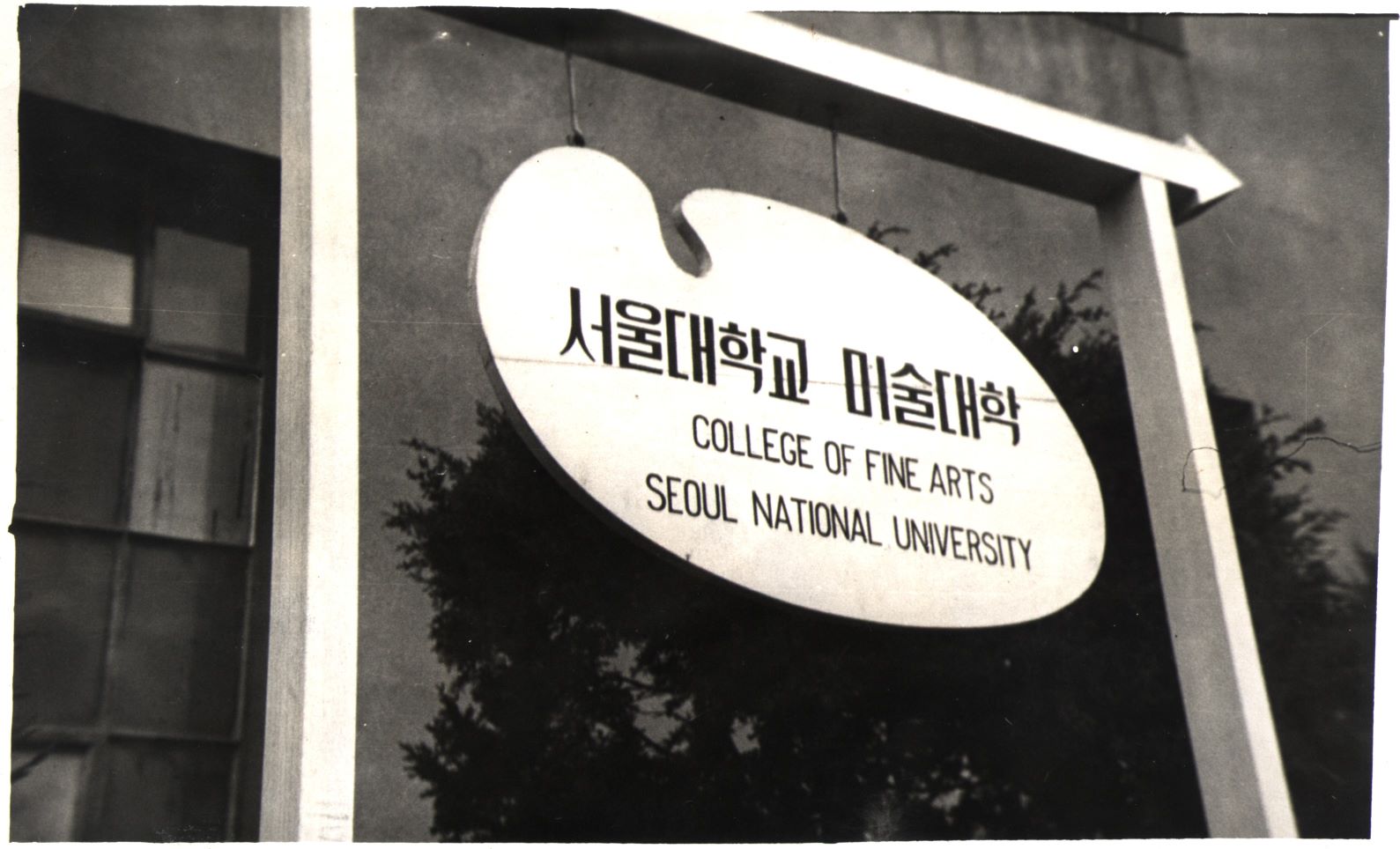
College of Arts at Seoul National University
The College of Fine Arts of Seoul National University is located in Sillim-dong, Gwanak-gu, Seoul. According to the Decree on the Establishment of Seoul National University, the College of Art including the Department of Fine Arts and the Department of Music was founded in August 1946 at Seoul National University. The Department of Fine Arts consisted of sub-departments of Painting I, Painting II, Sculpture, and Design. It was organized by Chang Louis Pal and Lee Soonsuk. Chang Louis Pal had served as head of the Education and Management Bureau in the U.S. Army Military Government in Korea (USAMGIK) in Korea since December 1945. Lee Soonsuk assumed practical tasks as an advisor to the art section of the USAMGIK from 1946 when the Education and Management Bureau was changed to the Ministry of Culture and Education. In 1946, there were nine faculty members at the Department of Fine Arts in the College of Art: Chang Louis Pal, Kim Yongjun, Gil Jinseop, and Lee Jaehun as professors; Yun Seung-uk and Lee Soonsuk as associate professors; and Kim Whanki, Chang Woosoung, and Lee Byeonghyeon as assistant professors. However, after the incident of Korean students and professors’ protest against the U.S.’s attempt to merge several colleges and universities into a single university, Kim Yongjun, Gil Jinseop, and Kim Whanki resigned. In 1954, the College of Art was reorganized into the College of Fine Arts with three departments of painting, sculpture, and applied art. The Department of Aesthetics, which had temporarily belonged to the College of Fine Arts since 1948, was transferred to the College of Liberal Arts and Sciences in 1960. In 1963, according to the relocation plan of the Seoul National University main school building, the College of Fine Arts was moved to the former veterinary department building in Yeongeon-dong, Jongno-gu. In 1972, it was moved to the liberal arts department building in Hagye-dong, Seongbuk-gu, and then in 1976, to the current Gwanak campus. In 1981, the three departments of painting, sculpture, and applied art were reorganized into the five departments of Eastern painting, Western painting, sculpture, crafts, and industrial art. In 1989, the Department of Industrial Art was renamed the Department of Industrial Design, and in 1999, the Department of Crafts and the Department of Industrial Design were merged into the School of Design. Currently, the College of Fine Arts consists of the Department of Oriental Painting, Department of Painting, Department of Sculpture, Department of Craft, Department of Design, and Interdisciplinary Programs.






